
项目是回应气候和人类体验需求的建筑。不只是增加屋檐来遮挡门窗上的风雨和阳光,还设计了一个伞顶,同时还需要通风和照明,使得景观中的叶子密集起来,获得通风和清新的环境。即设计一个“多层外墙”,以减少辐射,将风引向室内,为窗户遮阳,为墙面降温,引导视线。最终,各种基本要素的总和使这个热带建筑自由地表现出与昏暗的空间相匹配的感觉,这也是幸福的条件。
"Micro Tropicality” is to designthe building responding to the demands of the climate and the humanexperiences. It is much more than just to add an eave to cover a door or awindow of rain and sun, design an umbrella roof but at the same time toventilate and illuminate, to make the landscape dense in foliage in ordertoventilate and refresh the environment. It is to design a"multilayer facade" to reduce radiation, to direct the breeze inside,to shade the windows, to cool the walls and to direct the views. In the end,the sum of necessary elements gives a free expressiveness to this tropicalarchitecture, which is congruent with the dimly lit space, which is a conditionfor well-being.
▽项目鸟瞰 Aerial
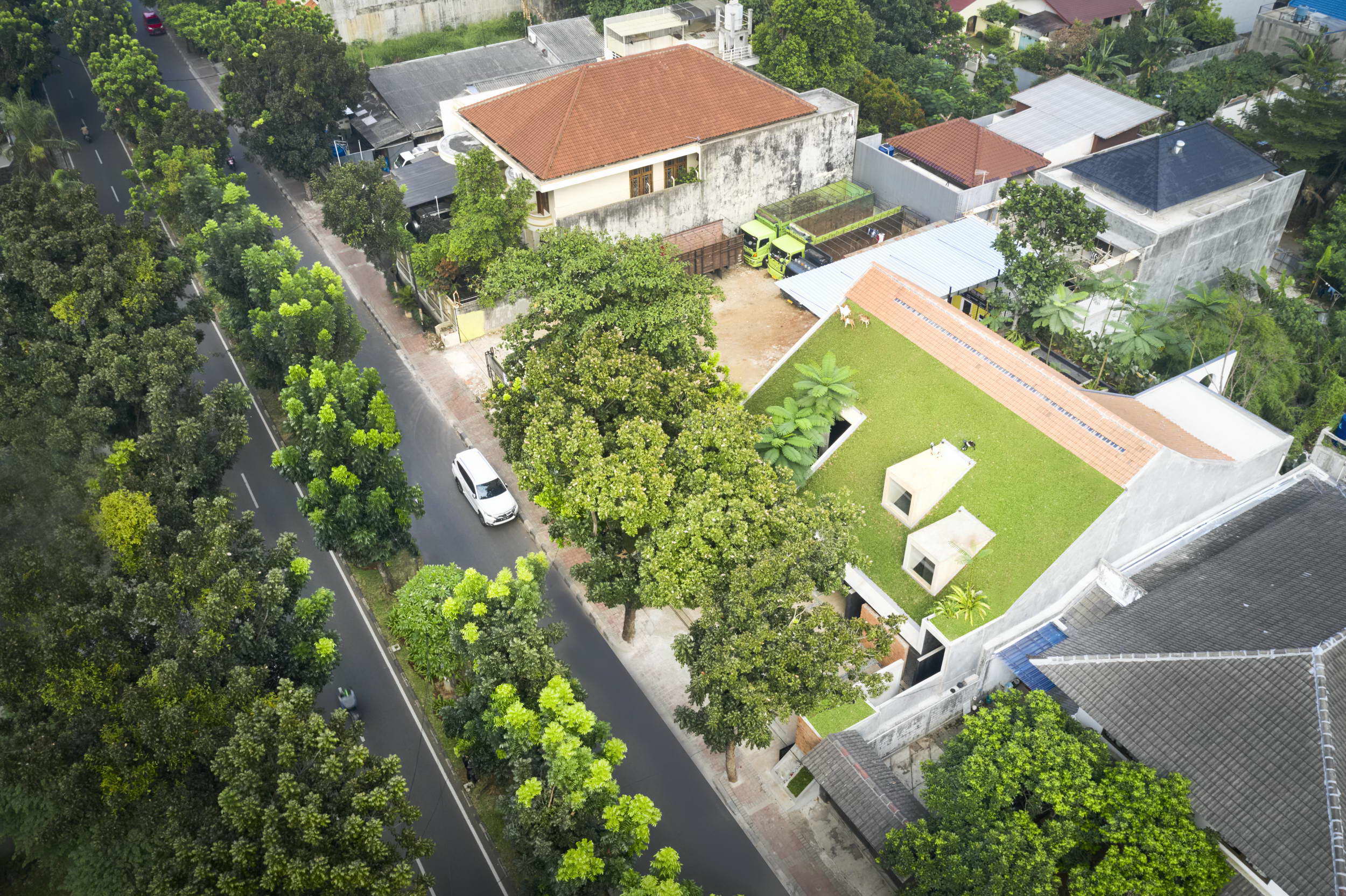
▽项目外观 Exterior
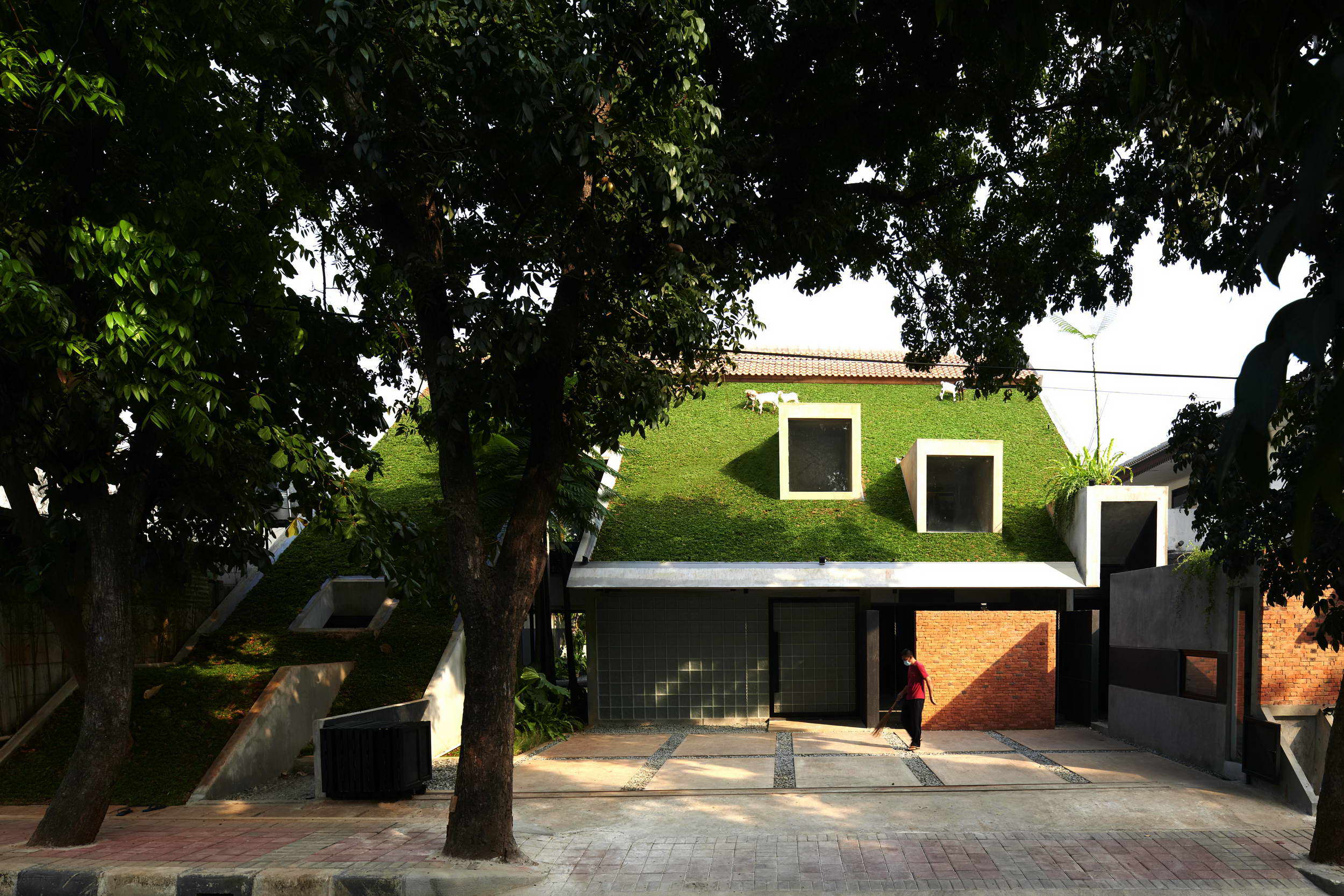
设计是为了展示建筑与热带环境之间的对话,可能会打破一些热带建筑方法的基本准则。
Design is to demonstrate a dialoguebetween architecture and tropical environments that may breaks some basic codeof Tropical Architecture approach:
▽室内空间 Interior Spaces
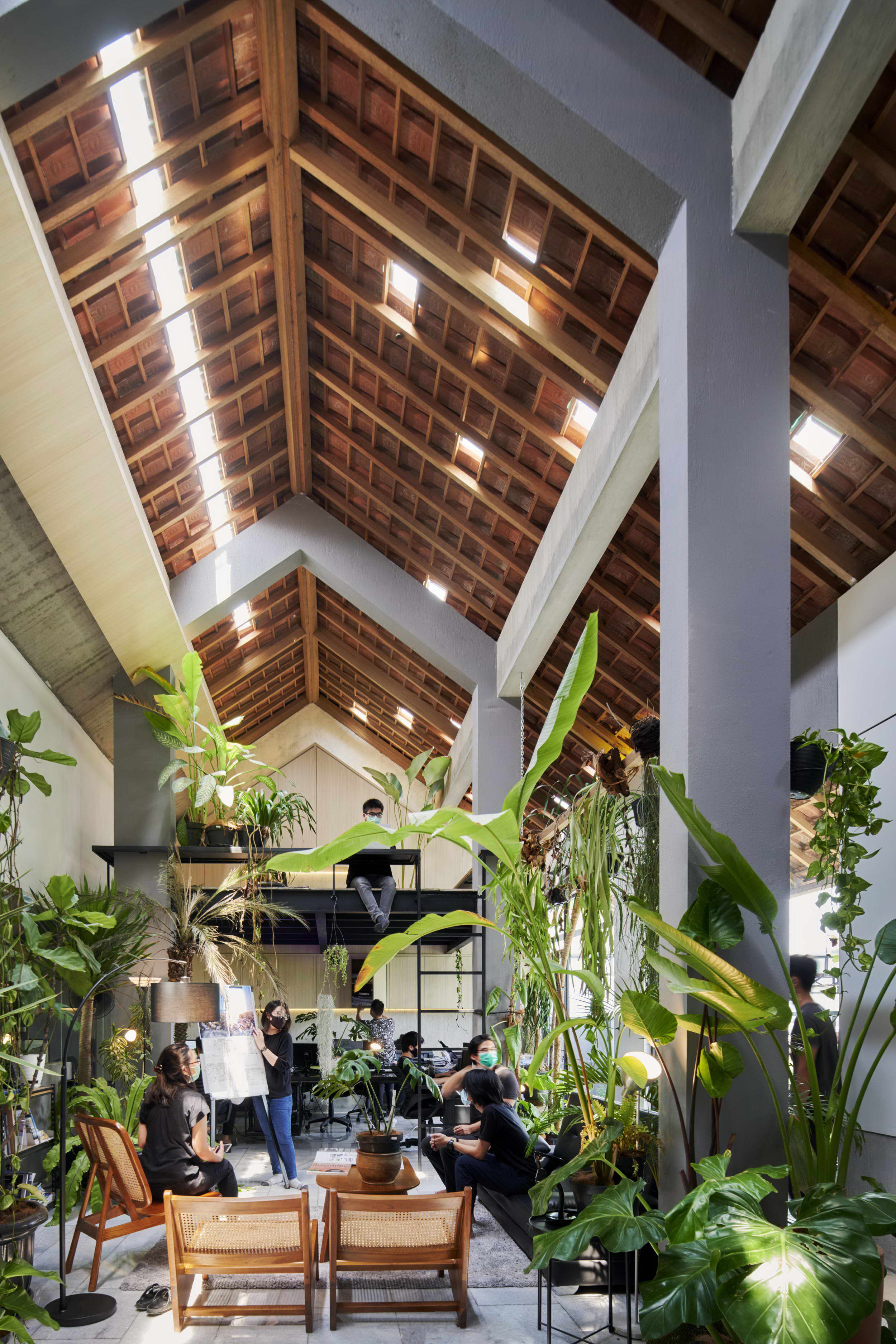 | 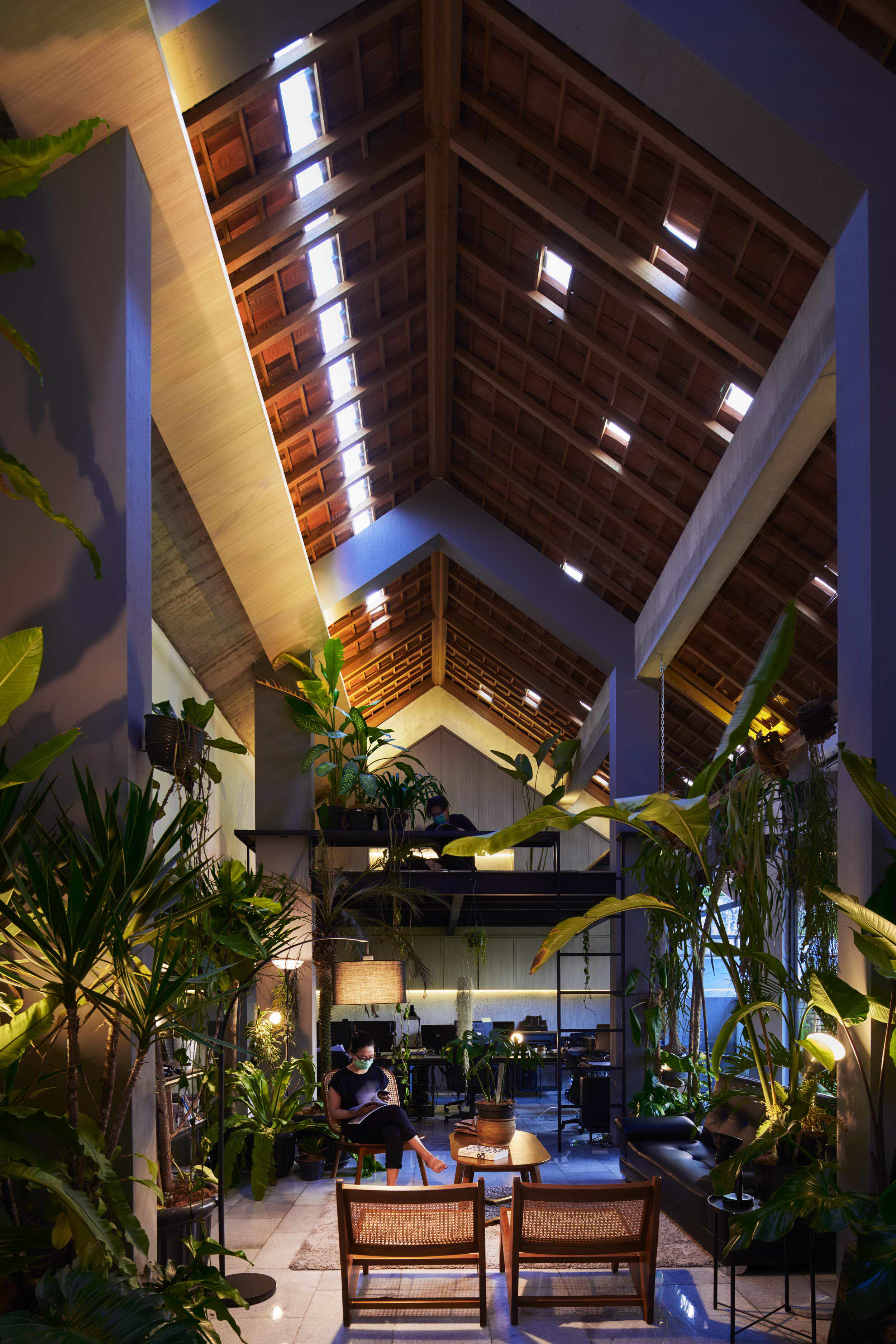 |
▽室内空间 Interior Spaces
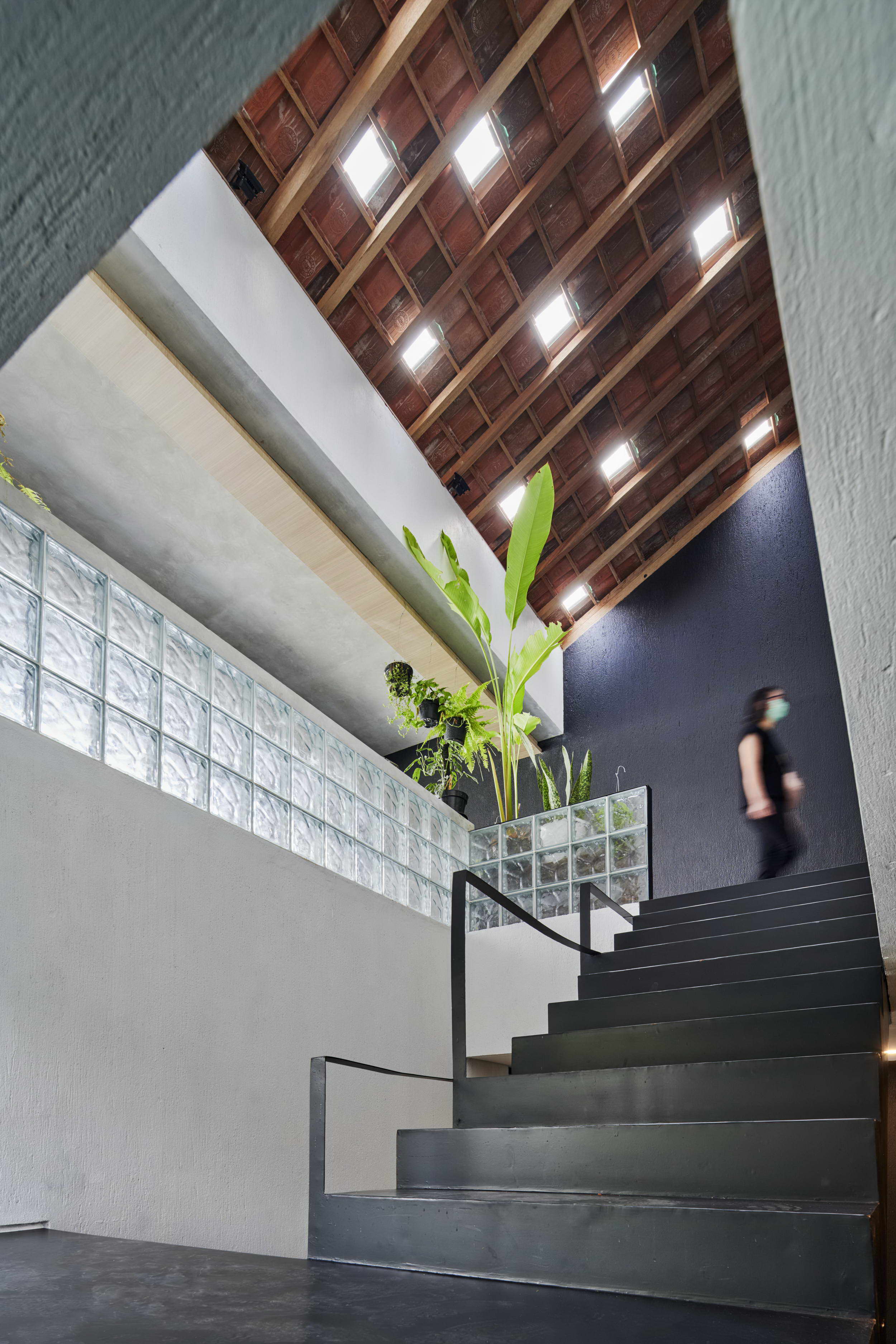 | 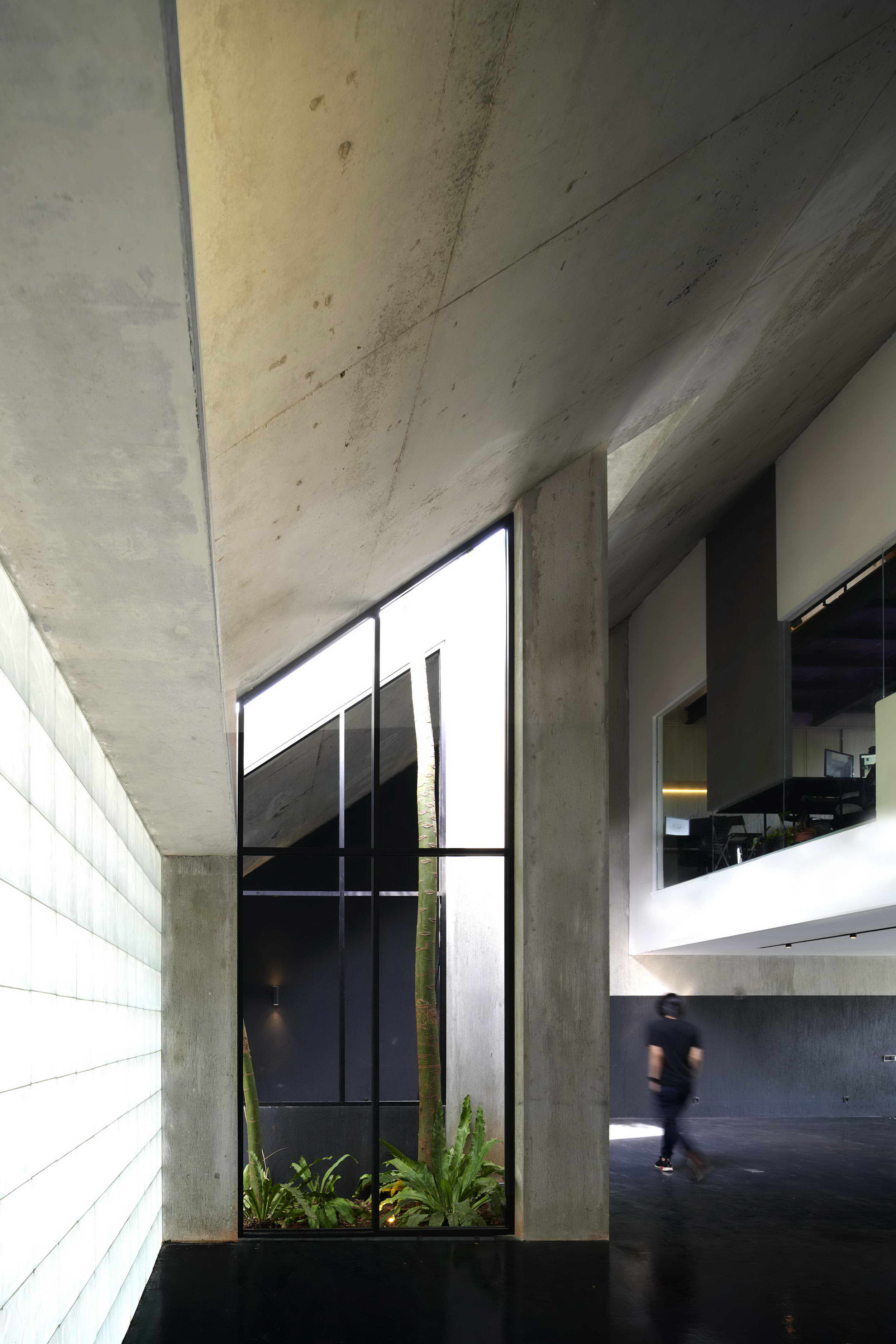 |
引导雨水的同时保留水 VS 直接引导/直接排水
热带地区的坡屋顶的角度是受其历史影响的,它能有效地将水引向地面,使建筑能经受住暴雨和极端季节的考验。然而,随着结构的创新已经融入到日常的规划中,大多数建筑仍然采用这种方法,而没有足够的方式来保留水。本设计旨在树立一个榜样,如何在尽可能多吸收水的同时,还能分配水的负荷,并将其慢慢释放出来,以供日后使用,100%吸收所有场地的雨水,然后用于总灌溉。
Retaining water while channelling itVS directly channelling / avoiding rainwater.
Dramatic angle of pitch roof in tropics were influenced by its historicalapproach of channelling water to the ground with great efficiency so thebuilding might endure heavy rain and extreme season. However, as structuralinnovation has been adapted into daily planning, most building still adoptedthis approach without an adequate manner of retaining the water. Design is toset an example of how one can still distribute water load while trying toabsorb as much water as possible and release it slowly for later usage. 100%Rain water absorbed from all the site later to be used for total irrigation.
▽项目剖透视图与雨水处理系统 Section / rainning system
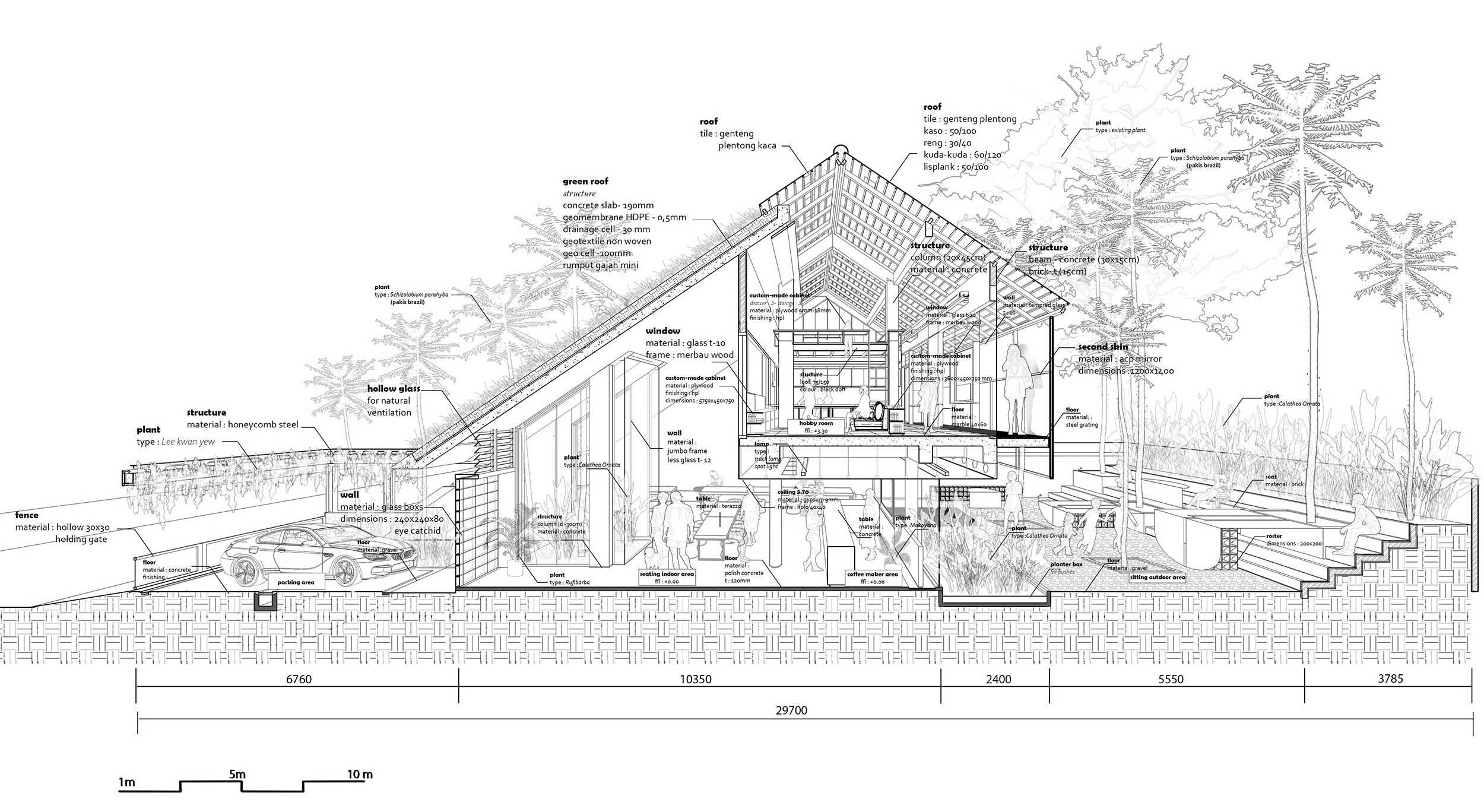
▽坡屋顶上的绿植 the plant on the roof
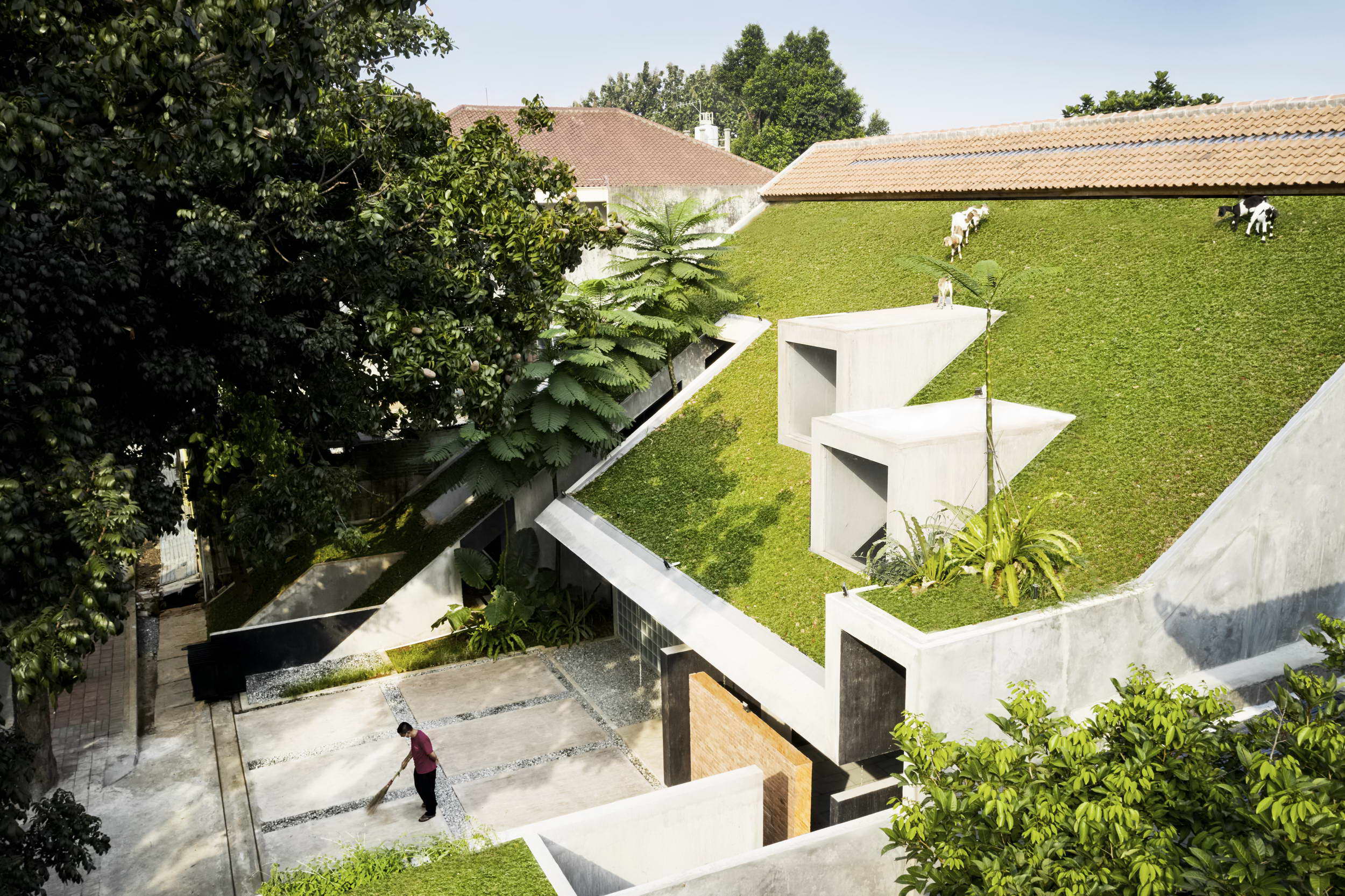
▽坡屋顶引导雨水流入院子里,进行雨水二次利用The sloping roof leads rainwater into the courtyard for reuse
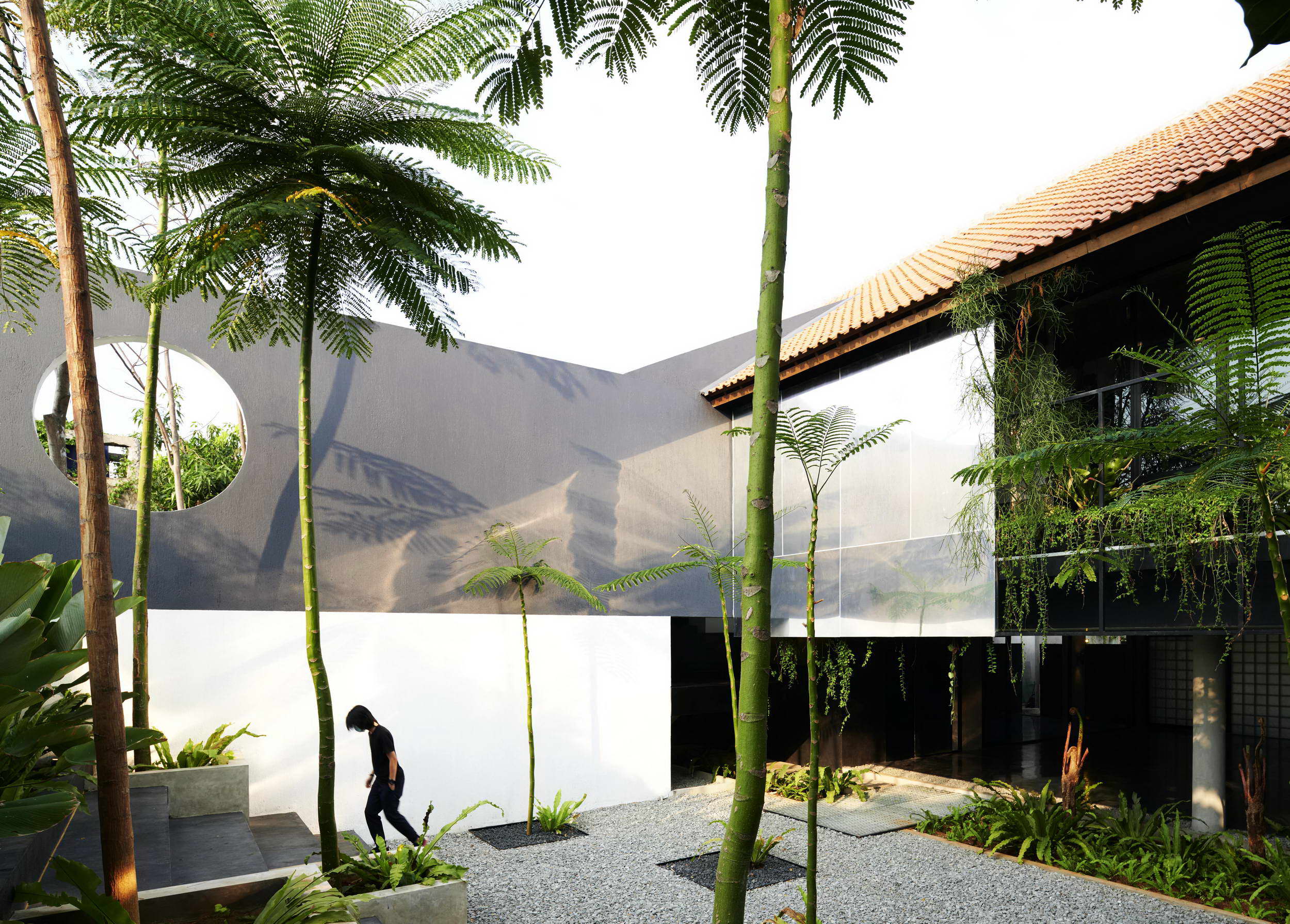
功能性立面或无立面 VS 传统立面
由于热带建筑的标准已经形成了数百年,大多数热带建筑都有不成文的准则或方式,如何将立面方法与屋顶结合起来,设计的目的是为功能与美学的结合树立一个榜样。
Functional façade / no façade vscultural allusion
As tropical norm has been integratedfor hundreds of years, most tropical building has unwritten guideline / mannersof how one should integrate façade approach with its roof. Design is to set anexample of how functionality can be integrated with aesthetical approach.
▽坡屋顶与立面结合,形成“微热带”的美学 Facade integrate with the roof
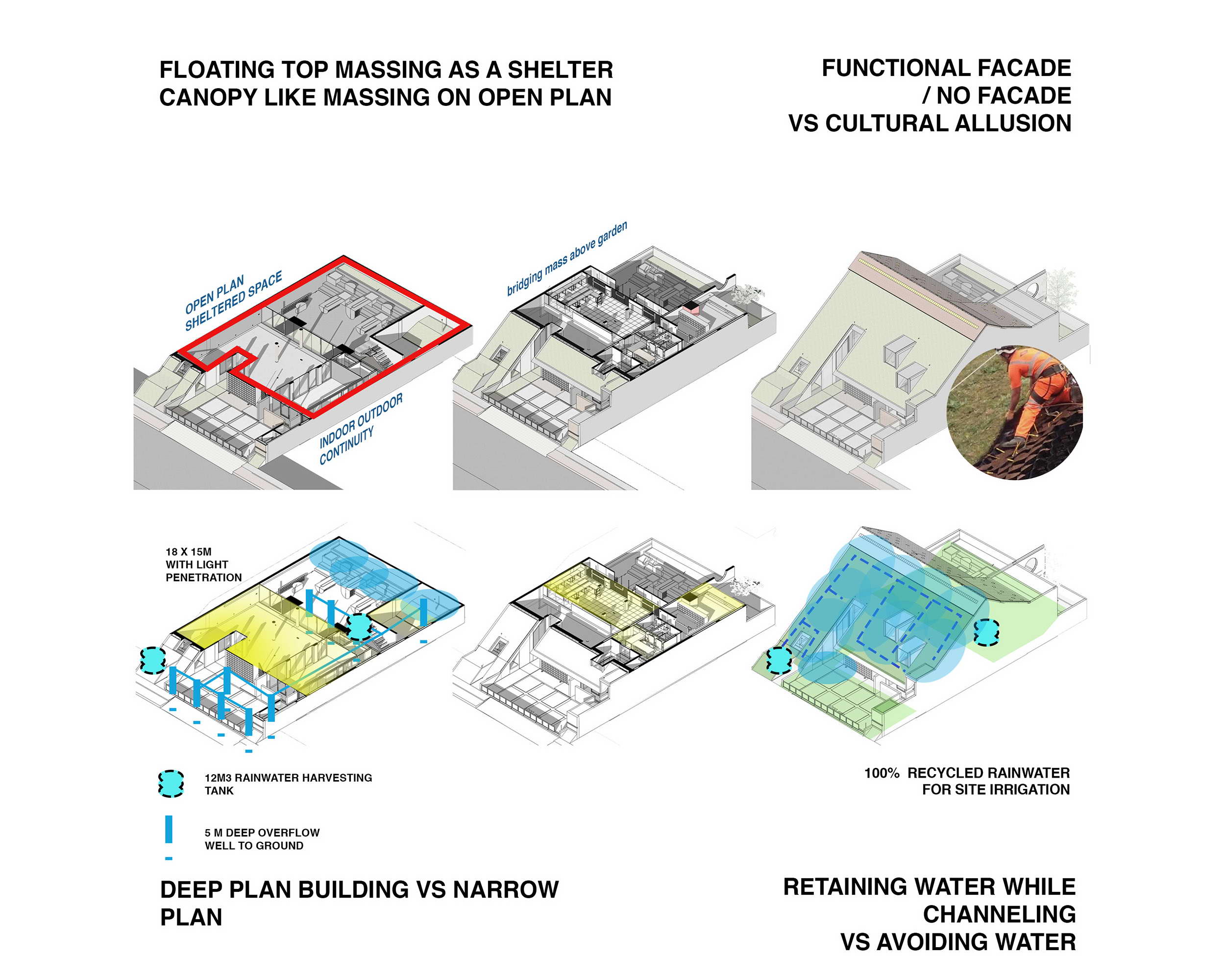
▽立面与屋顶融为一体 the facade is also the roof
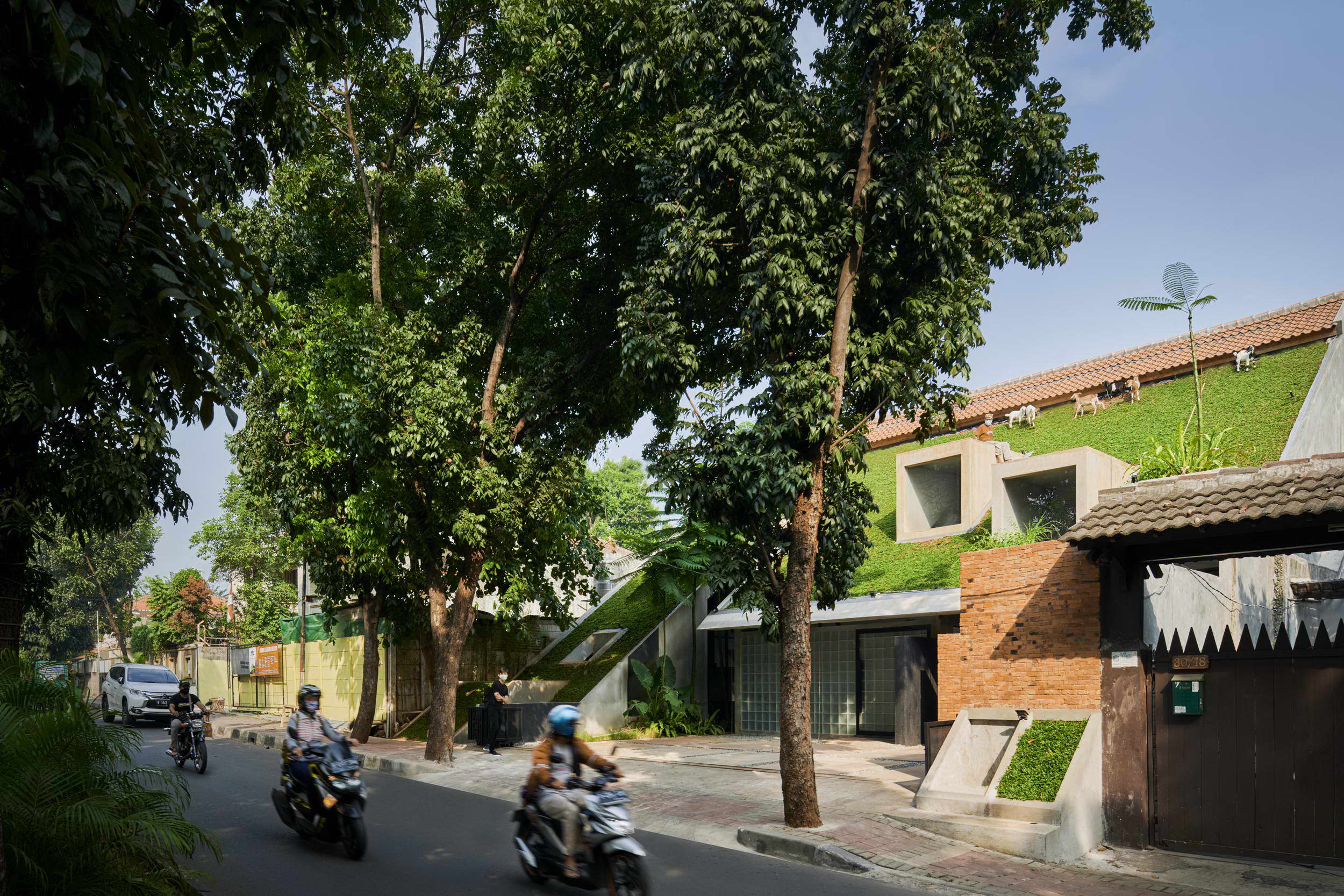
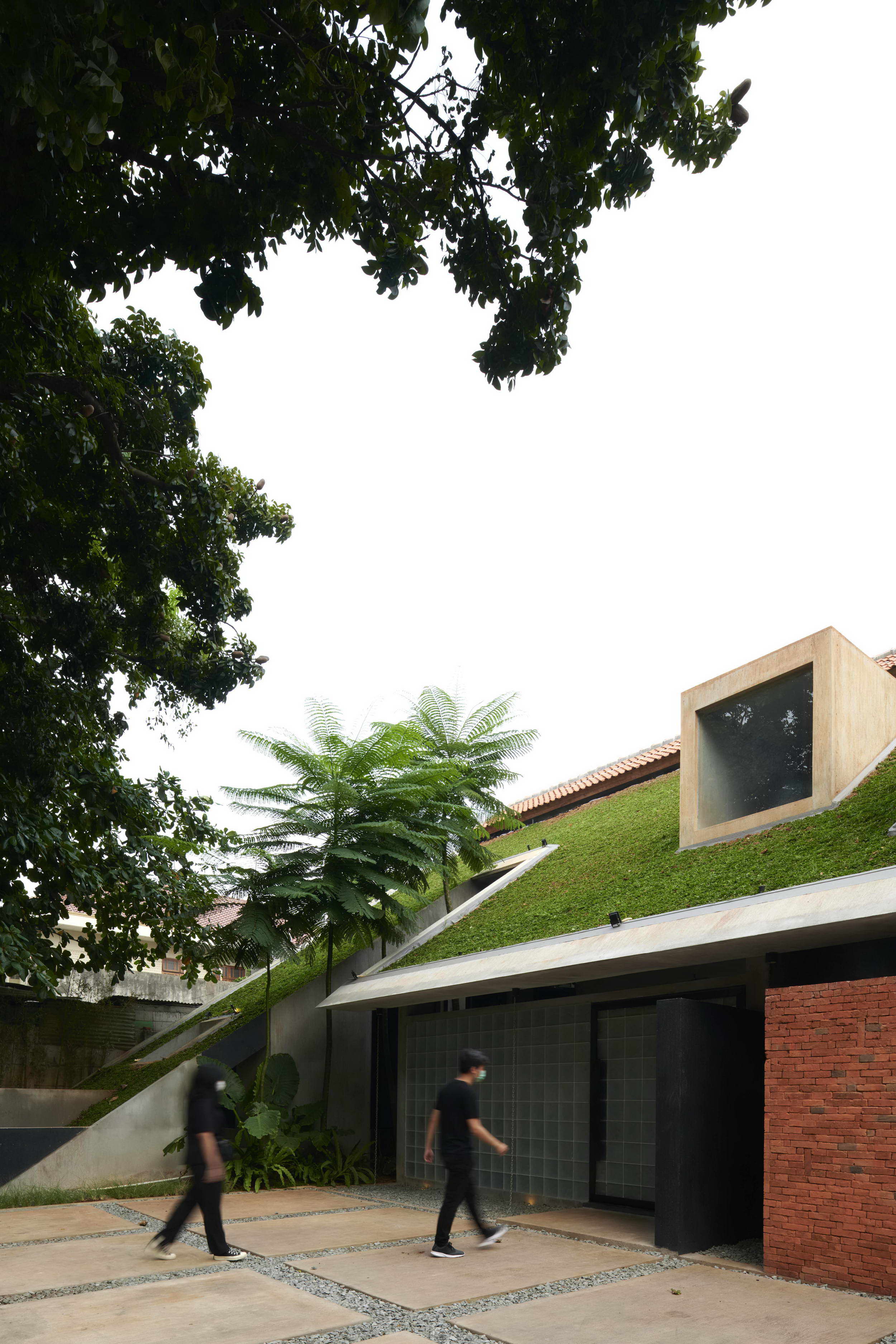 | 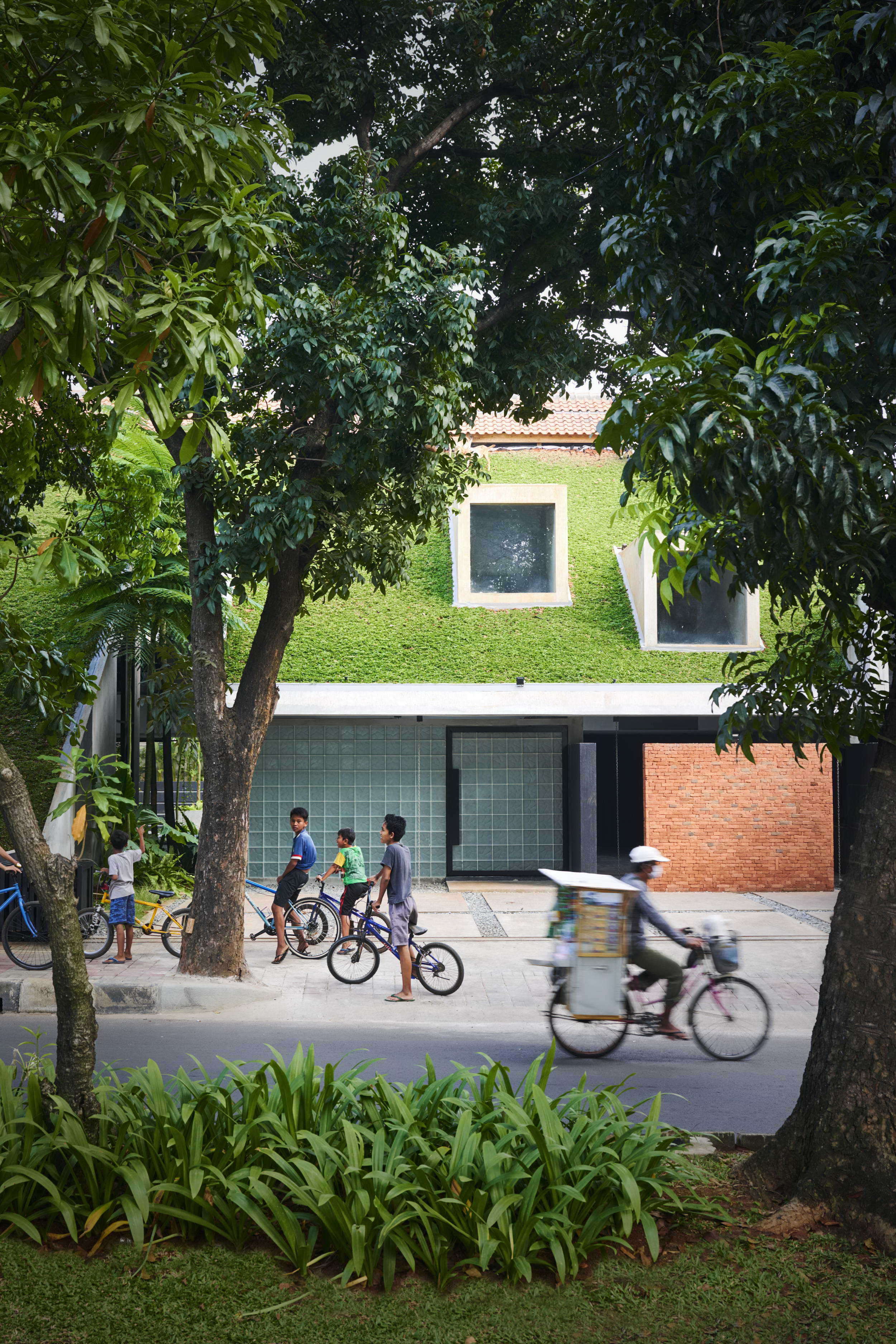 |
有最大照明策略的纵深平面 VS 狭窄平面
为了尽量减少白天的人工照明,大多数热带地区的规范都建议最大的平面宽度为12米,这导致了建筑体量的限制。为了在不影响外形和空间的前提下,使白天的自然采光达到最大化,设计上尝试在18米深的平面上打出渐进的垂直开口。
Deep plan building with maximumillumination strategy vs narrow plans
In order to minimize the usage of artificial lighting during productivedaytime, most tropical code are recommending 12m of maximum plan’s width thatleads to limitation of massing configuration. Design is to experiment withpuncturing gradual vertical opening within 18m deep plan in order to maximizenatural lighting during daytime without compromising form and space.
▽内部空间结合 Internal space combination

▽将体量分段错开形成的灰空间提供了采光puncturing gradual vertical opening bring the natural lighting
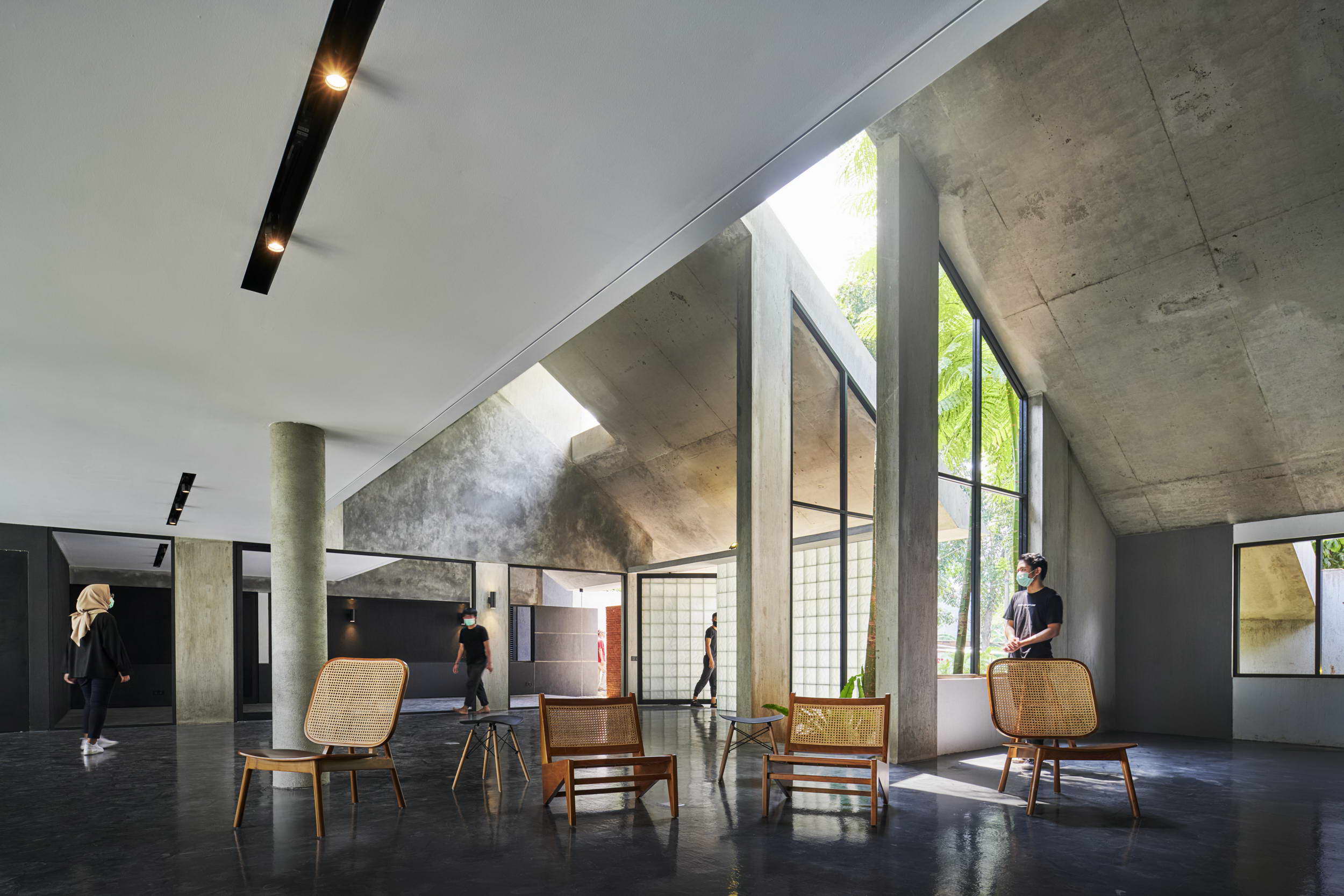
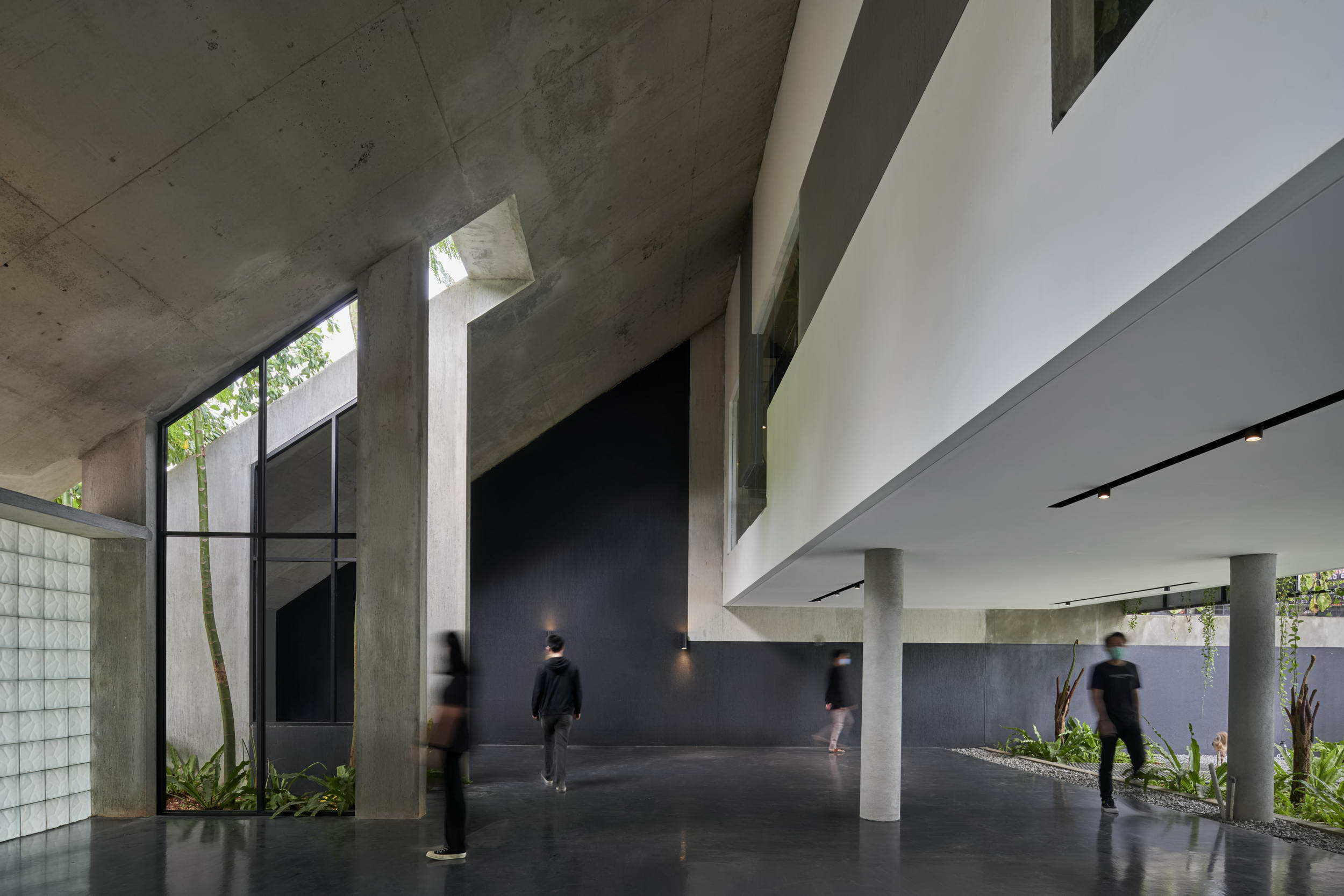
东西方向控制温度VS南北方向
由于散发出极大的热量,大多数热带建筑倾向于使用南北向来最大限度地照明,同时尽量减少热量传递到建筑。设计是在建筑的东西两面试验立面,利用这个机会创造一个更大的温差来控制其自身的微气候。
Manipulating internal temperaturethru East West vs North South Orientation
Due to extreme heat emitted, mosttropical buildings tend to use north south orientation to maximize illuminationwhile minimize heat transmitted to the building. Design is to experiment with Façadesurface on the east and west of the building and use that opportunity to createa greater temperature difference that control its own microclimate.
▽东西立面的通风与日照产生舒适的微气候的调节 Manipulating internal temperature through the East and West facades
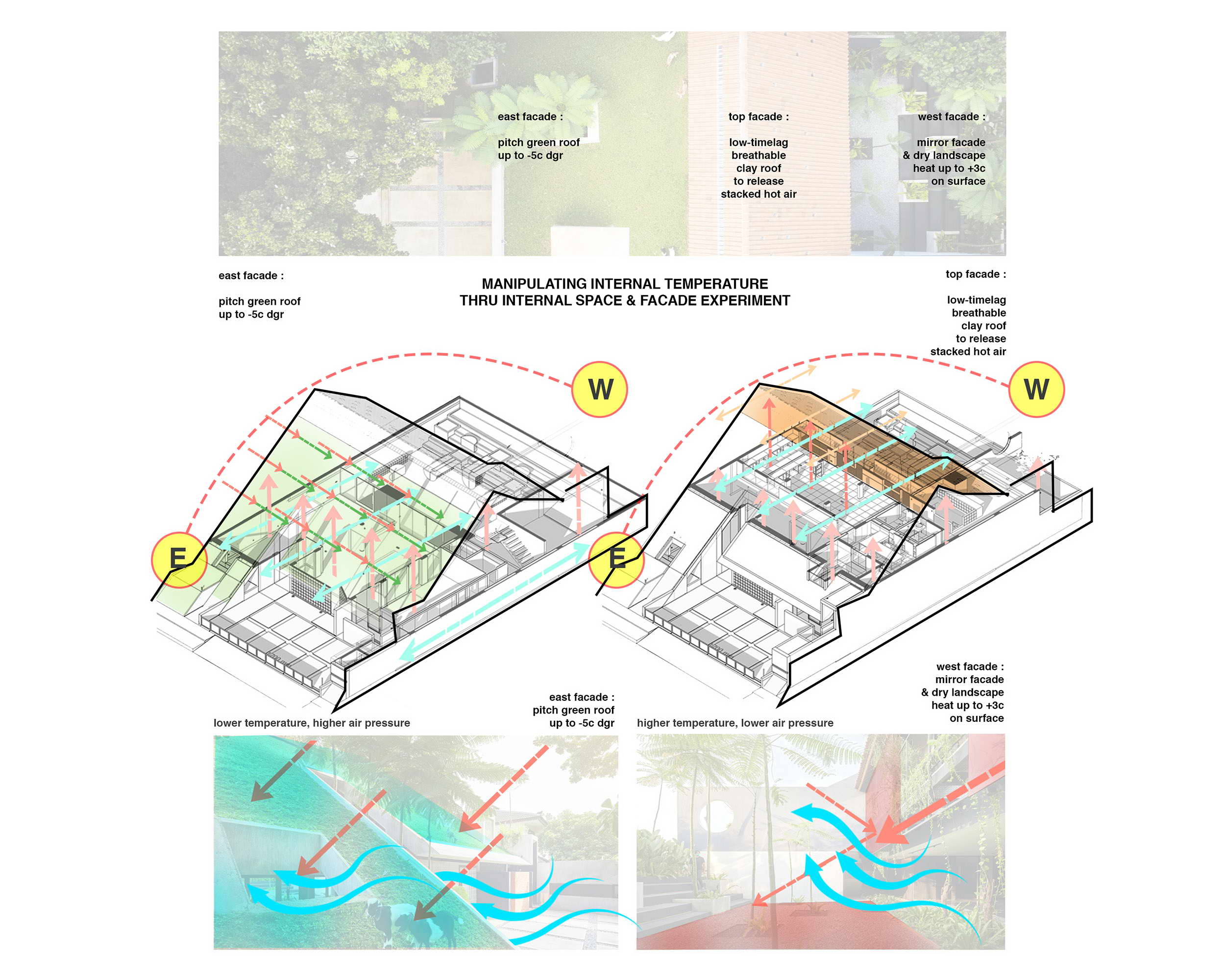
▽东立面 East facade

▽西立面 West facade
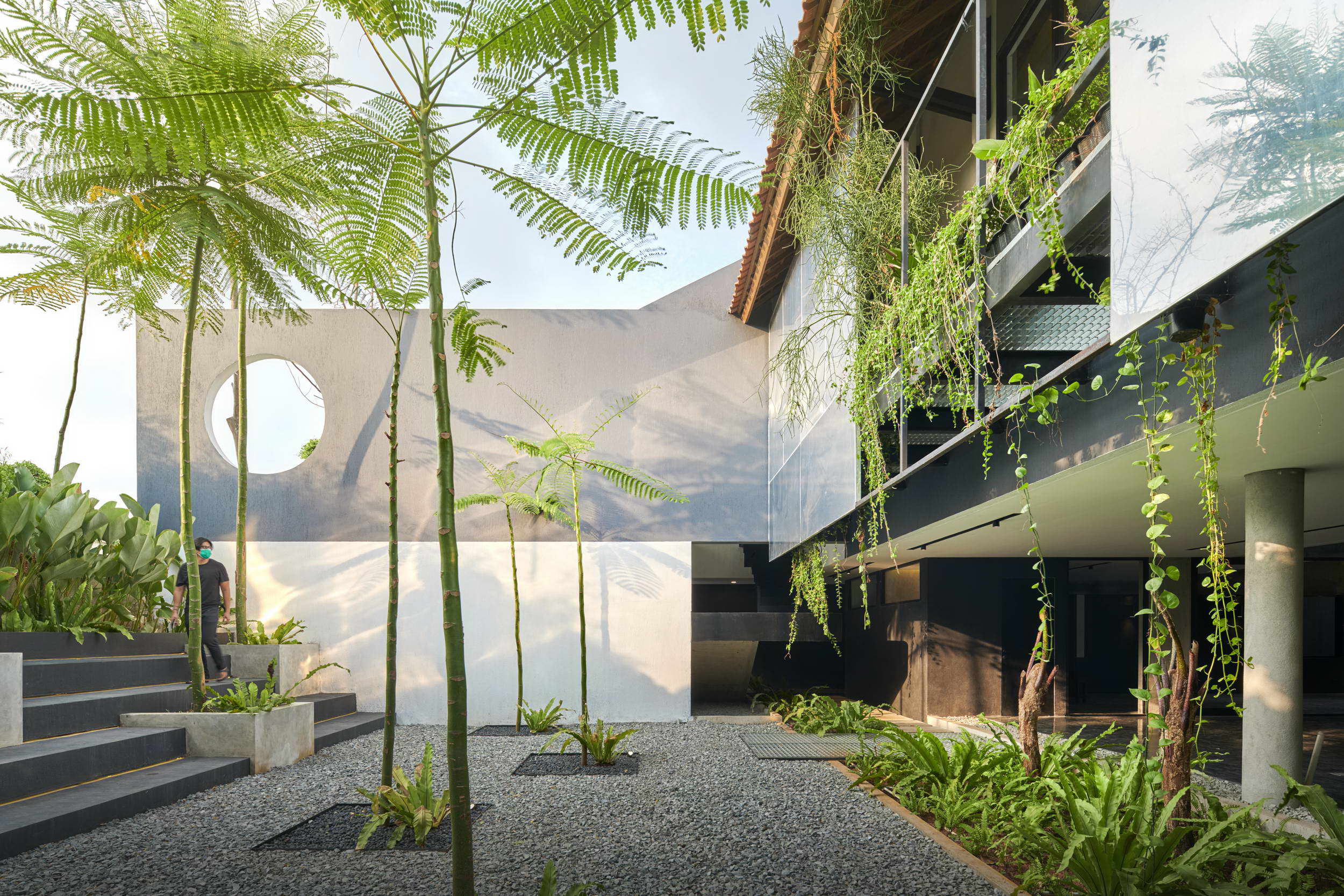
一个认识到热带纬度的特殊性并展示其表现力的设计准则的建筑将加强当地的文化,并将以更好的方式承载人们的经验,适应当地的空间性,并将认识到社会经济和人文条件;这一系列的属性将促进他们的占有和认可。
Anarchitecture that recognizesthe specificities of tropical latitudes anddemonstrates its expressivedesign guidelines will reinforce the local culture and will, in a better way,host people's experiences, adapt to the spatiality of the place and willrecognize the socioeconomic and human conditions; a set of attributes that willfacilitate their appropriation andrecognition.

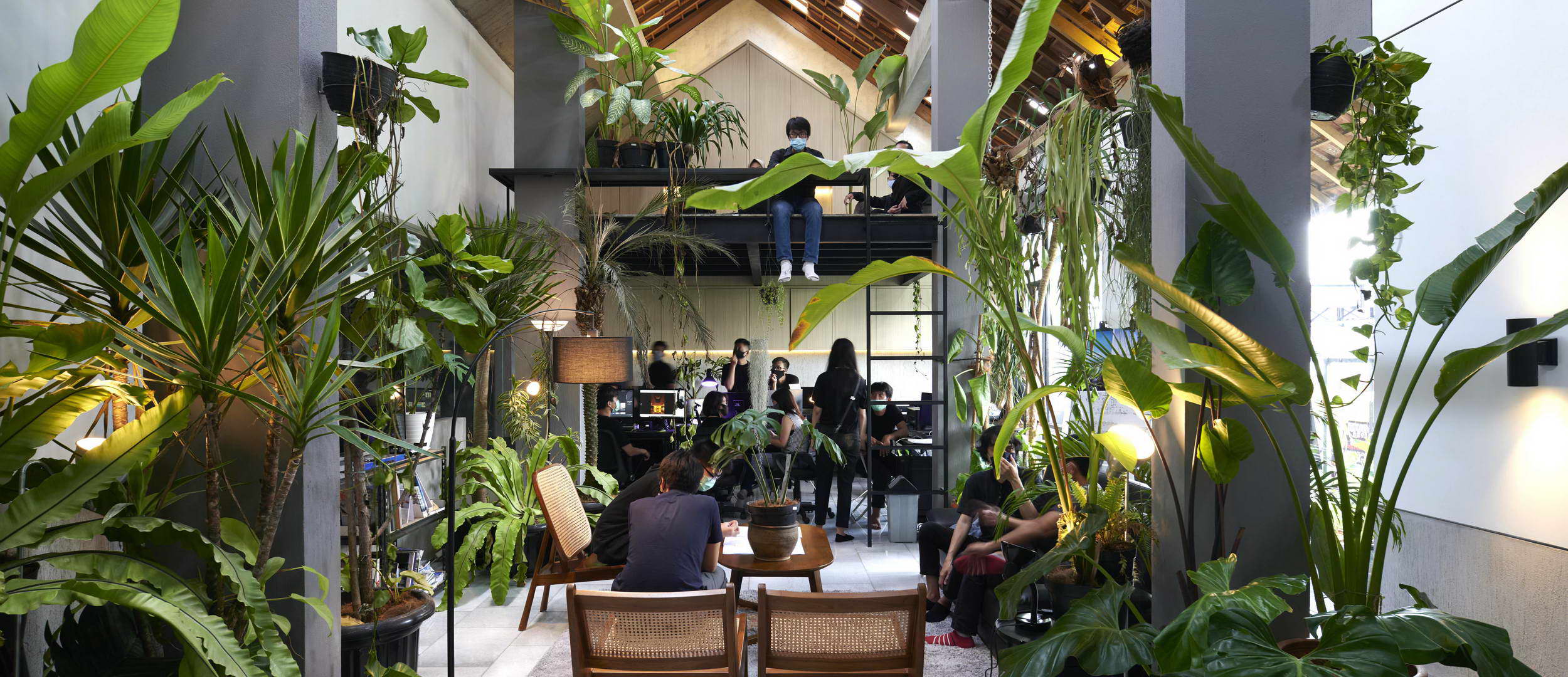
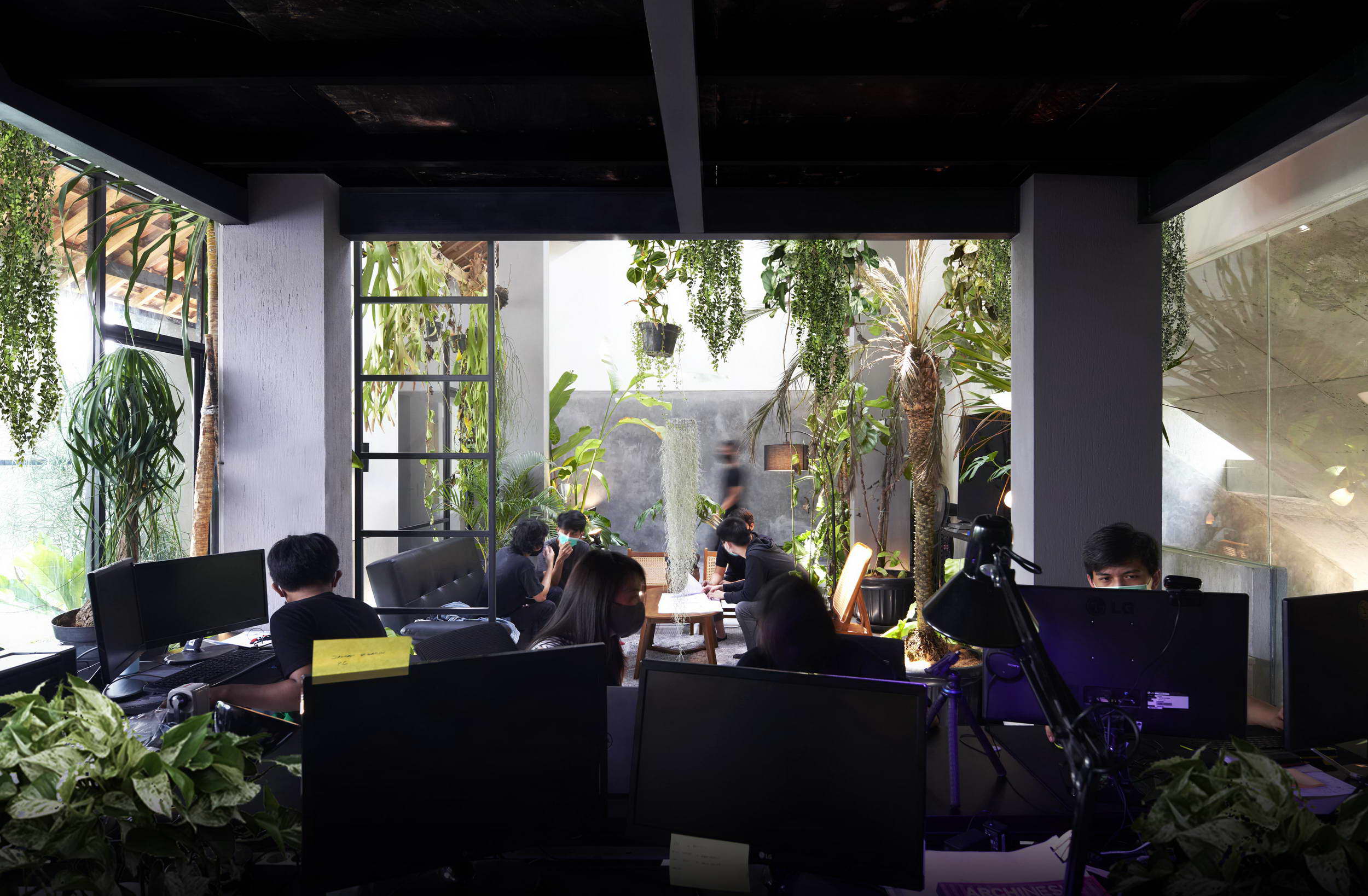

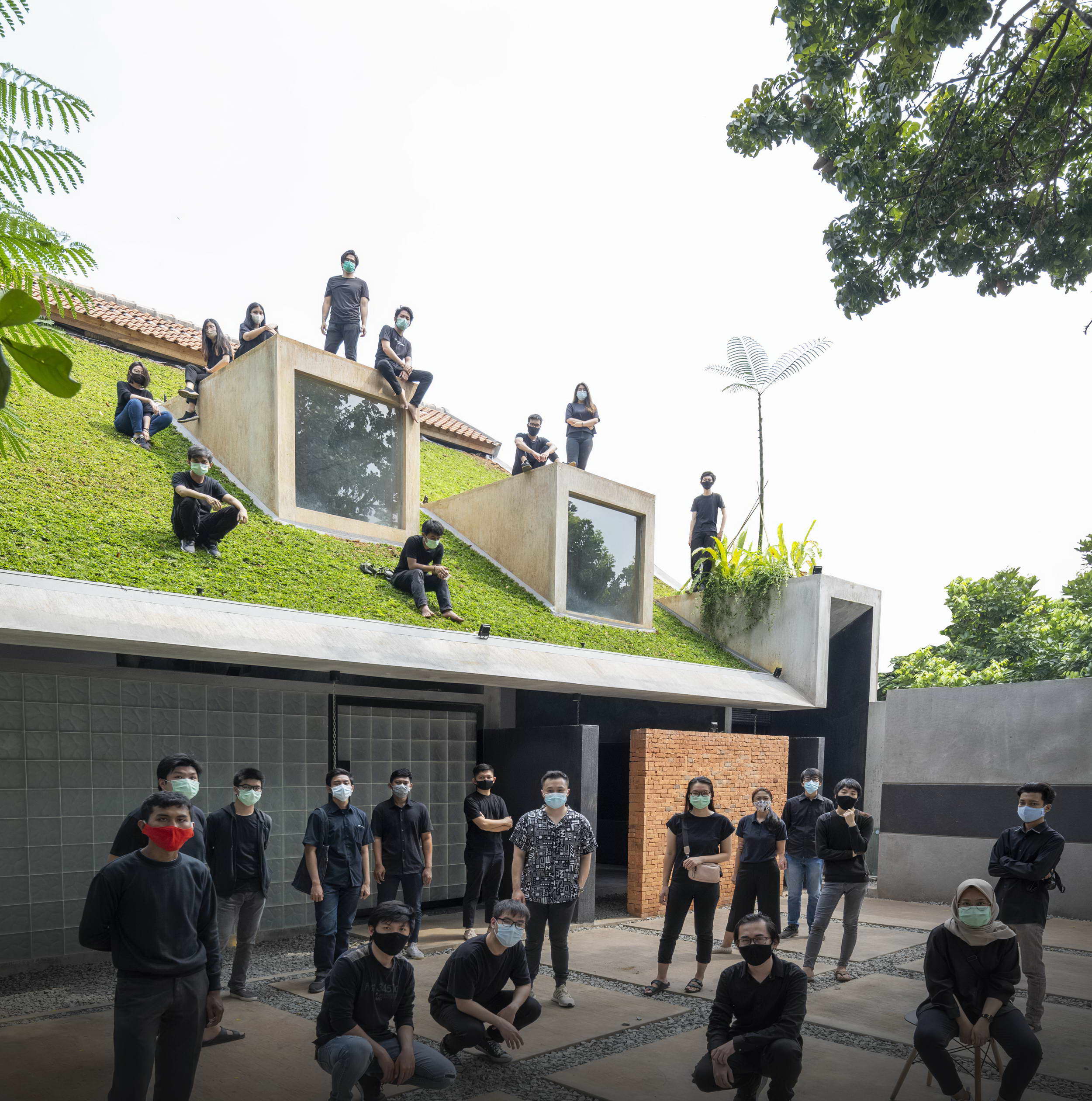
Project Name: MicroTropicality, RAD+ar HQ
Architecture Firm: RAD+ar (Research Artistic Design+Architecture)
Website: www.radarchitecture.net
Contact e-mail:Radarchitecture.studio@gmail.com/ Project@radarchitecture.net
Firm Location: Jakarta
Completion Year: 2020
Gross Built Area: 450 m2
Project location: Jakarta
Lead Architects: Antonius Richard
Lead Architects e-mail: arichardrusli@gmail.com
Design Team: Felda Zakri, Dadi Prasojo, Partogi Pandiangan, Leviandri
Clients: Antonius Richard
Engineering: RAD+ar (Research Artistic Design + architecture)
Landscape: RAD+ar (Research Artistic Design + architecture)
Consultants: RAD+ar (Research Artistic Design + architecture)
Collaborators: Monogeneral Contractor
Photo credits:William Sutanto
Photographer’s website:https://artipictures.com/